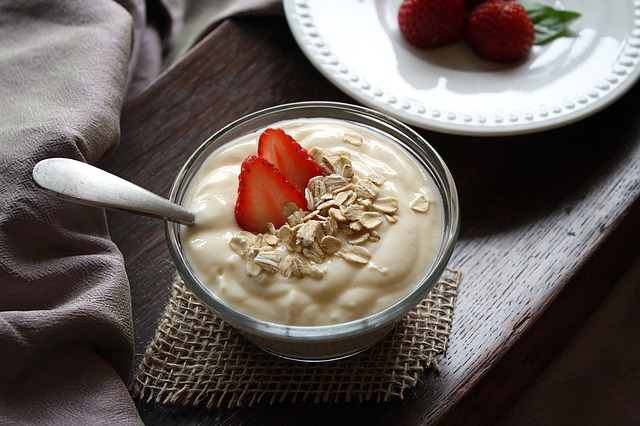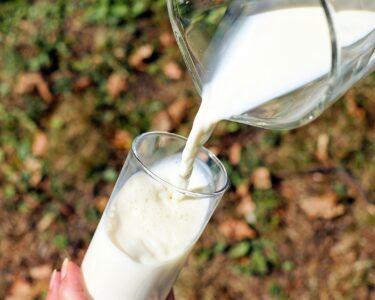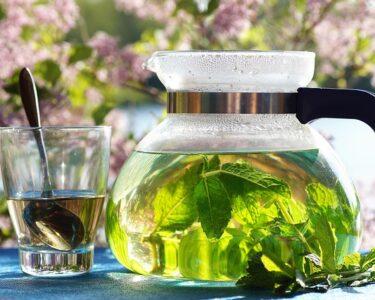First thing first, if you are trying to find some food to boost your immunity overnight, you are looking for impossibles. Boosting immunity is a long process that requires following a healthy lifestyle along with diet, sleep, stress, exercise for a considerable period of time to improve immunity.
Are you stressed reading news about Corona Virus? I know you are panicked. People giving suspicious look if someone is sneezing or coughing or suffering from general viral fever.
What can you do? How long can you sit at home? How long can you avoid the crowd or gathering? Tomorrow you have to go back to your normal routine.
It doesn’t matter how many times you are washing hands or using sanitizer or avoiding gathering until you are building your immunity within. So better start working on it.
Your 5 go-to foods to improve immunity –

There are 8 micronutrients – vitamin A, C, D, E, folic acid, iron, zinc, and selenium- which play the major role to keep your immunity intact. You must ensure supplying all the 8 regularly.
However, when it’s come to a food plate, not 8 but 5 is the magic number. You can’t afford to forget it in the present situation. Include all these 5 foods regularly to supply 8 major immune-boosting micronutrients.
1.One amla/lemon a day –
No prize for guessing that it is to ensure your regular vitamin C supply.
Vitamin C is not only a potent antioxidant but also act as a cofactor for biosynthetic and gene regulatory enzymes (2)
How much Vitamin C you need a day?
| Age group | RDA as per ICMR |
| Men | 40 mg |
| Women | 40 mg |
| Infants (below yr) | 25 mg |
| Children( 1 to 9 yrs) | 40 mg |
| Boys/ Girls (10-17 yrs) | 40 mg |
| Pregnant women | 60 mg |
| Lactating women | 80 mg |
RDA- Regular Dietary allowance, ICMR- Indian Council of Medical Research
Don’t be a fool by using lemon juice while cooking. It will NOT serve your purpose completely. Vitamin C is very sensitive to heat, light, and air. So it’s always best if you have it fresh. (1) That’s why trust in citrus fruits.
You may have a few pieces of fresh amla or a glass of fresh lemon water in the morning. You can also take slices of lemon with each meal.
Follow the table below to pick your favorite fruit rich in vitamin C.
| Food Stuff | Average weight of a fruit | Vitamin C Content (per 100 g) |
| Amla | 60-70 g | 600 mg |
| Country Guava | 170 g | 212 mg |
| Lime (Mosambi) | 160 g | 50 mg |
| Lemon | 30-50 g | 39 mg |
| Orange | 160 g | 30 mg |
| Pineapple | 750 -800 g (small ) | 39 mg |
| Tomato | 120-140 g (medium) | 27 mg |
Reference – Nutritive value of Indian Foods, NIN,2016
Remember to have one whole fruit a day. You may think of having freshly prepared fruit juice with or without adding a little bit of sugar. Don’t forget to add half the pulp back in the juice. But don’t trust packaged fruit juice. You know why?

2. Don’t miss a good portion of yellow/orange fruit or vegetable –
Yes, it is for ensuring your vitamin A intake. Vitamin A is another powerful antioxidant that protects epithelial and mucous integrity in the body. It’s your anti-inflammatory vitamin essential to maintain your immunity. (3)
We consume beta carotene through food which gets converted to vitamin A in your body.
Okay, how much Vitamin A (retinol) you need in a day?
| Age group | RDA as per ICMR – Retinol (Vitamin A) (ug) | RDA as per ICMR – Beta –Carotene (ug) |
| Men/ Women | 600 | 4800 |
| Pregnant women | 800 | 6400 |
| Lactating women | 950 | 7600 |
| Infant | 350 | 2800 |
| Children (1-6 yrs) | 400 | 3200 |
| Children (7-9 yrs) | 600 | 4800 |
| Boys/Girls (10-17 yrs) | 600 | 4800 |
RDA- Regular Dietary allowance ,ICMR- Indian Council of Medical Research

B- carotene is a yellow-orange-red pigment which is available in fruits and vegetables. So start thinking of your favorite yellow/orange/red fruits or vegetables that you can have daily. To help you, I am putting this chart below-
| Food stuffs | Carotene content (ug/100 g of edible portion) | B-carotene content (ug/00g of edible portion) |
| Carrot | 8840 | 6460 |
| Pumpkin | 2100 | 1160 |
| Mango (ripe) | 2210 | 1990 |
| Papaya (ripe) | 2740 | 880 |
| Orange | 2240 | 190 |
| Tomato (ripe) | 3010 | 590 |
| Sweet potato | 2200 | 1810 |
Reference – Nutritive value of Indian Foods, NIN,2016
Try to add one of the yellow/ orange/red colored fruit or vegetables on your plate every day.
3. Let green leafy vegetables be a part of your plate –
Green leafy vegetables are rich in carotene and a fair source of folic acid and iron. Therefore not one or two, you have three solid reasons to keep some space for greens in your plate every day.

Follow the chart before you plan your weekly grocery list –
| Food stuffs | Indian Name | Total Carotene (ug/100g of edible portion) | Total Folic acid (ug/100 g of edible portion) | Iron (mg/100 g of edible portion) |
| Agathi | Bak/Agathio/Agasti /Avise/Bansa | 45000 | – | 3.9 |
| Amaranthus Gangeticus Tender | Notey/chaulai/Thotakoora /Thandukeerai | 20160 | 149 | 3.49 |
| Colocasia leaves | Kochu sag /Arvi-ka-sag/chama akulu/ guan-ka-sag | 15700 | – | 6.3 |
| Coriander leaves | Dhonepata/ dhania | 15000 | – | 1.42 |
| Curry leaves | 21000 | 93.9 | 0.93 | |
| Drumstick leaves | Sajna sag/mulaga akulu /saijan patta | 42000 | – | 0.85 |
| Fenugreek leaves | Methi sag | 11800 | – | 1.93 |
| Lettuce | 7000 | – | 2.4 | |
| Spinach | Palong/palak | 9440 | 123 | 1.14 |
| Mint | Pudina | 18950 | 114 | 15.6 |
Reference – Nutritive value of Indian Foods, NIN,2016
4. Consume two bowls of pulses and a handful of sprout daily –

Not only for protein, must you take your pulses seriously to ensure the supply of zinc, folic acid and to some extent iron requirement.
Folic acid plays a crucial role in DNA and protein synthesis. It has been seen people with a folic acid deficiency often suffer from decreased resistance to infection. (4) Folate is the natural form of vitamin B9 found in food.
Zinc helps to keep our immunity strong, heal wounds and support normal growth. The functionality of immune cells gets decreased during zinc deficiency. (5)
Two medium bowls of legumes/pulses can easily be a part of your daily balanced diet. Sprouts are loaded with micronutrients in their most available form. Therefore don’t forget to have a handful of sprouts in addition to legumes/pulses.
How much folic acid, zinc you need in a day?

| Age group | RDA of Dietary folate(ug/d) as per ICMR |
RDA of Zinc (mg/day) as per ICMR |
| Men | 200 | 12 |
| Women | 200 | 10 |
| Pregnant women | 500 | 10 |
| Lactating women | 300 | 12 |
| Infant | 25 | – |
| Children 1-3 yrs | 80 | 5 |
| Children 4-6 yrs | 100 | 7 |
| Children 7-9 yrs | 120 | 8 |
| Boys/Girls 10-12 yrs | 140 | 9 |
| Boys/Girls 13-15 yrs | 150 | 11 |
| Boys/Girls 16-17 yrs | 200 | 12 |
RDA- Regular Dietary allowance , ICMR- Indian Council of Medical Research
Folate is the natural & Folic acid is the synthetic form of Vitamin B9.
1ug folate = 0.60ug of folic acid
Knowing about daily requirements is meaningless if you don’t know well about their dietary sources. Note down the pulses that contain a good amount of zinc and folic acid. Check the table below –
| Pulses/legumes | Indian Name | Total folic acid content (ug/100g) | Zinc content (mg/100g) |
| Bengal gram | Chana/chola (desi) | 186 | 6.1 |
| Roasted Bengal gram | Bhuna chana | 139 | 6.1 |
| Black gram dal | Urad dal | 132 | 3.0 |
| Green gram dal | Moong dal | 140 | 2.8 |
| Lentil dal | Masoor dal | 36 | 3.1 |
| Red gram dal | Arhar dal/tuver dal | 103 | 0.9 |
| Soyabean (white) | 100 | 3.4 |
Reference – Nutritive value of Indian Foods, NIN,2016
5. Eat a handful of nuts and seeds daily

Nuts and seeds are a powerful source of micronutrients. They are even more beneficial when soaked overnight. Soaking helps to reduce the anti-nutritional factors as well as make all the nutrients more available to the body.
Apart from other nutrients, nuts and seeds are a great source of iron and vitamin E, both are essential to maintain immunity.
Iron plays a major role in proliferation, maturation of immune cells especially lymphocytes. Besides this, your body also uses iron while producing cells that stop bacteria to reproduce. Being a potent antioxidant like vitamin C and A, Vitamin E is also essential to maintain body immunity. (6,7)
Dietary supply of iron and vitamin E is therefore essential to support your immune system. Nuts and seeds like almonds, peanut, pistachio, pumpkin seeds, sunflower seeds, etc are rich sources of vitamin E.
It is indeed a matter of concern that 50% of Indian struggle with anemia. As per the National Family Health Survey (NFHS-4) in 2016, 58.6% of children, 50.4% of pregnant women and 53.2% of non-pregnant women are anemic in India. Therefore it is needless to say that every second woman and children in India are already struggling with compromised immunity.
How much iron do you need in a day?
| Age group | RDA of iron as per ICMR (mg/d) |
| Men | 17 |
| Women | 21 |
| Pregnant women | 35 |
| Lactating women | 21 |
| Infant | 05 (after 6 months) |
| Children 1-3 yrs | 09 |
| Children 4-6 yrs | 13 |
| Children 7-9 yrs | 16 |
| Boys 10-12 yrs | 21 |
| Girls 10-12 yrs | 27 |
| Boys 13-15 yrs | 32 |
| Girls 13-15 yrs | 27 |
| Boys 16-17 yrs | 28 |
| Girls 16-17 yrs | 26 |
RDA- Regular Dietary allowance ,ICMR- Indian Council of Medical Research

Check the table to choose your favourite nuts and seeds to ensure your iron RDA –
| Nuts and seeds | Iron content (mg/100g) |
| Garden cress seed (Halim/Aliv) | 100 |
| Niger seeds (Til) | 56.7 |
| Watermelon seed (karnel) | 7.4 |
| Sunflower seed | 5 |
| Pumpkin seed | 5.5 |
| Almond | 5.09 |
| Cashew | 5.8 |
| Groundnut (roasted) | 3.1 |
| Pistachio | 7.7 |
| Walnut | 2.6 |
Reference – Nutritive value of Indian Foods, NIN,2016
Don’t get excited. Remember to have only one handful of nuts and seeds in a day. Good foods are enough if taken in moderation.
If you are anemic and struggling to boost your hemoglobin level, consider taking garden cress seeds now. Having one tablespoon of this seed can create magic within 2-3 weeks.
Can I eat fish/meat/eggs?
There are a lot of rumors floating around related to non- veg foods. As per the World Organisation of Animal Health (OIE) and Food Safety and Standards Authority of India (FSSAI), there is no scientific evidence to prove the transmission of coronavirus from animal to human.
Please note that the World Health Organisation (WHO) has suggested cooking meat and eggs thoroughly but did no circulate any information so far to avoid non-veg items. Indian dishes are always fully cooked in high flame. Imagine your favorite mutton/chicken or egg preparation. It’s better to avoid half-boiled or egg poaches for a time being but there is no valid reason so far to avoid a complete boiled egg.

The screenshot is taken from the WHO website for awareness purposes.
Are adding these 5 foods enough to boost immunity?
Drink enough water, in fact, keep sipping water in small intervals to stay hydrated.
Add a bowl of curd or any fermented food – kanji/ kimchi/ sauerkraut/ homemade pickle– in the regular diet to keep your gut healthy. You can even have a yogurt-based smoothie for bringing variation.

Don’t get afraid to add spices in food. Ginger, garlic, cinnamon, star anise, turmeric are few Indian spices which are proved to be effective boosting immunity. (10, 11, 12, 13, 14). Try to drink a cup of fresh ginger tea, star anise tea in between meals. You may choose to chew a clove of garlic first thing in the morning or feel free to use it in curries. Consider drinking turmeric milk before bed. It’s great for kids too. Apart from using in curries, you may try turmeric tea as well.
Apart from these foods remember to complete your sleep daily. There is no sleep bank that you will compensate for today’s sleep tomorrow. Your body does not work like that. Give your body time to repair, maintain and rejuvenate the next day for proper functioning. Studies have shown that once your sleep is compromised, your immunity is not at its best (8)
Besides this, be active throughout the day as much as possible. Let your body exposed to sunlight for a while to get the daily dose of vitamin D. Engage yourself with any kind of exercise that you enjoy – walking, running, dancing, playing, or swimming- anything. Exercise helps in better blood circulation and stimulates your immunity. (9)
Eating healthy is NOT a magic bullet
Don’t think drinking a glass of lemon water is enough to save for from pandemic virus spread. Please note, you need to follow a healthy lifestyle for long to improve your immunity. But it’s never late than never.
Follow the WHO guideline to stay safe in this coronavirus outbreak.
Bottom Line-
Stop being panicked with a virus (read coronavirus for now). Apart from following the safety and hygiene practices, invest energy to boost your immunity. Diet is crucial to include foods for better immunity. Consume citrus fruit, allow some green and yellow fruit/vegetables on your plate. Start your day with a handful of sprout. Snack once on a fistful of soaked nuts and seeds. Don’t forget your dal at lunch and dinner. Stay active, sleep well and do some exercise to complete the process.
Don’t think much. It’s time for action.






3 Comments